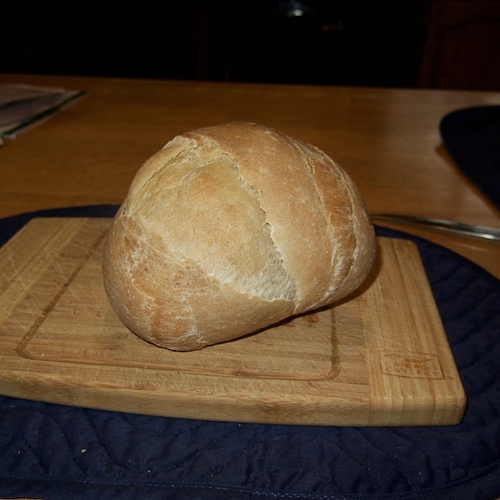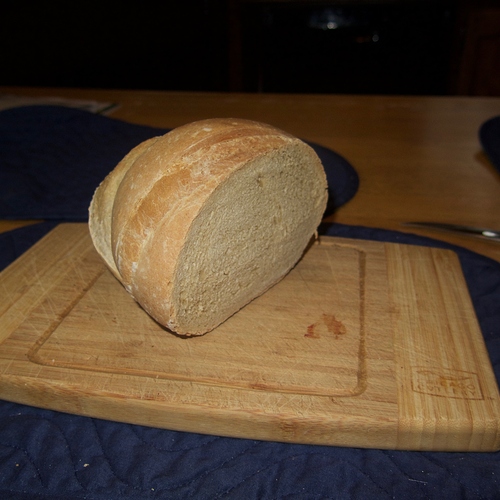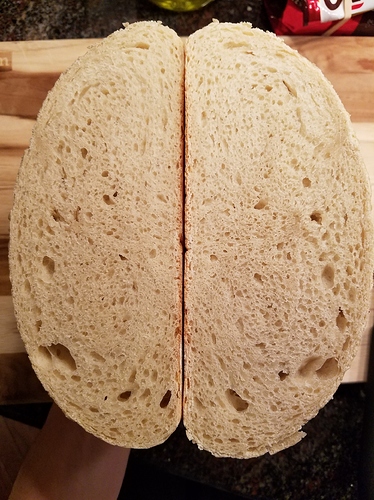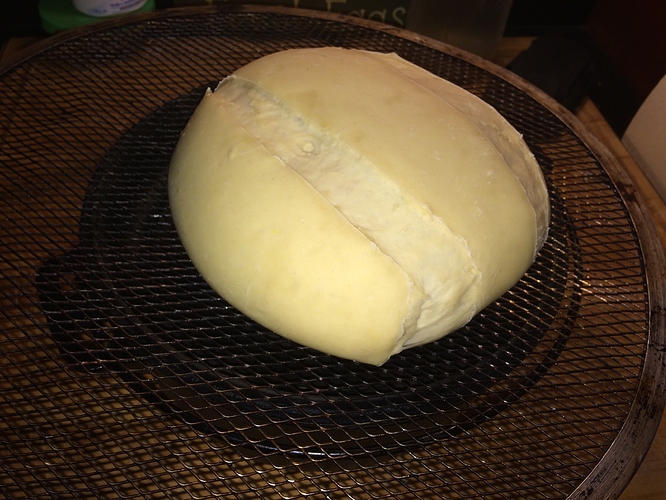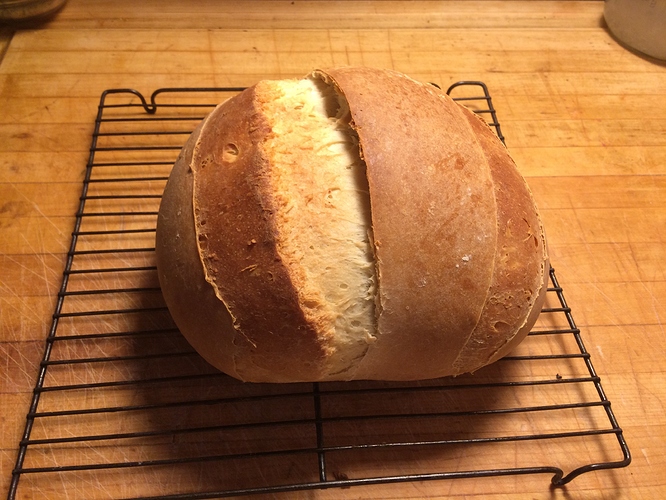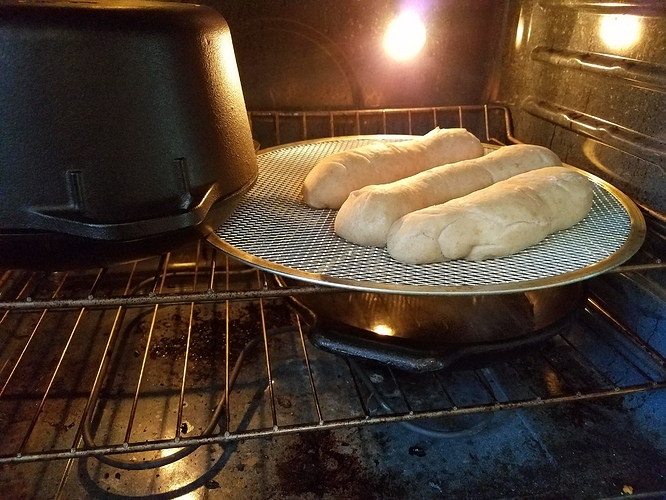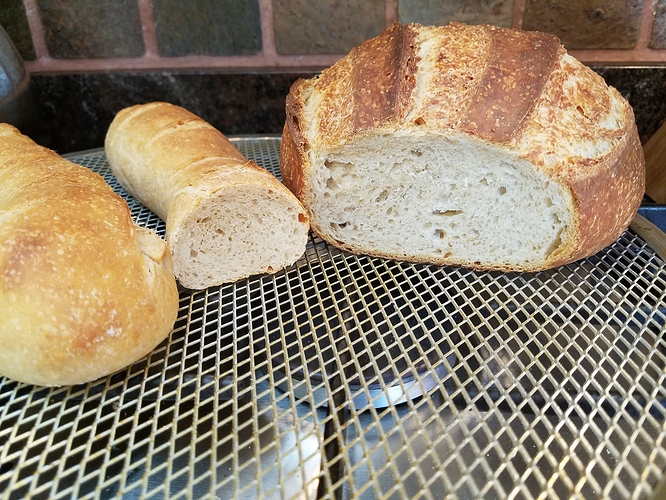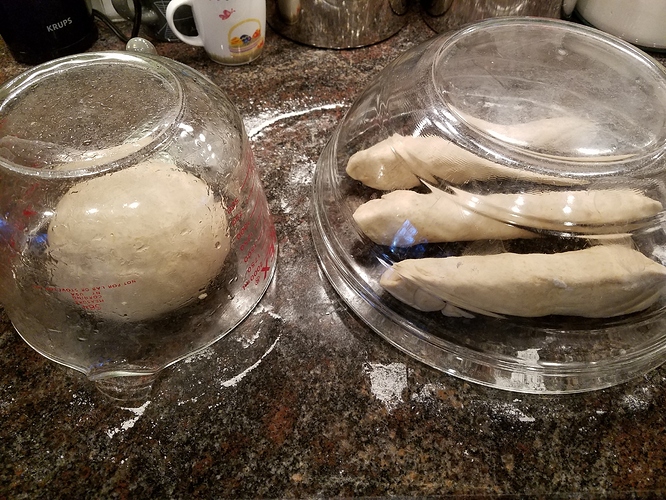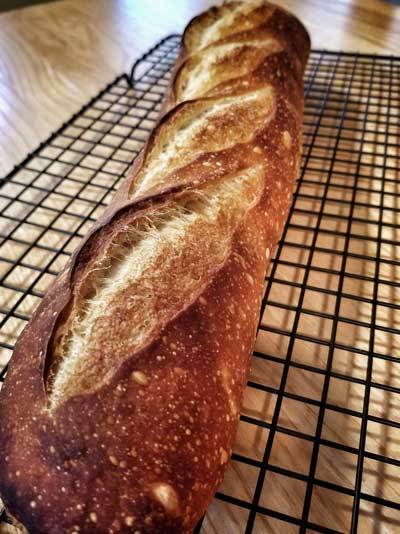Questions:
How can you tell the temperature inside the loaf? Do you use a meat thermometer or something?
I always use digital termometer, bake until 200º or more, but never close to or more than 212º. Moisture evaporates at the boiling point of water. The less time the longer you need to let loaf cool - if it has been fully baked. Seems like your biggest problem was cooking time. When not fully baked it will be gummy! I find that bread is done after 196º but at that point it is gummy and very moist. Works for cake and keeps moisture in, but not well to develop a proper loaf’s crumb.
Do I need to cook it longer, or at a higher temperature? Or both? .
Time and temperature are exchangeable to some degree. Add time at less temp or decrease time and raise the temp. They are exchangeable, find what combo works for you.
What about using a dutch oven? I thought you’d need a wetter dough (like in the no-knead recipe) for that to work. If you use the dutch oven, I assume you preheat it in the oven.
I have not tried a DO for this recipe, you will have to experiment to find the right prep and combinations. Sorry to drop this on you, but I don’t like my DO for baking, it is deep and tends to overcook the bottom of the loaf and usually I get burnt putting in or taking out! IF that is what you want to try, raise it up in the oven as high as possible, keeping it off the bottom which is the hottest. Try wetter and see how it works for you. For now, I would try baking on something open and flat like a cookie sheet, pizza stone, pizza screen, anything flat what will take the temperature. You could even use the DO lid upside down if it will sit in your oven staying flat.
Anyway, I’d like to try this again, but want to know what to modify to get a better result.
I would get some type of temperature measurement. Digital works perfectly and gives you the information that you need. Great investment if you like cooking especially baking. Eric has quite a few ranging in price from $15.00 and up. A simple digital thermometer will do wonders and I believe solve most of you problems: color, crust, soggie-ness. One more thing you must bake completely to at least 200º (I like 205-207º) and also let the bread completely cool before slicing otherwise you will have a gummy loaf,
As to the SD taste I find the more moist and airy (less thick) you starter is the more SD taste you get. When SD starter is old and has lots of fluid (alcohol), when fed it will give the best flavor. SD taste is very subtle, delicately complex and comes last to your taste buds and is a by-product of the culture(s) in your area. If you lather the bread with jelly or butter or both. It is possible that you will cover the SD taste completely. Try a plain piece of toast, you will get the SD taste, and a wonderful taste that we are looking for.
Meat theromometer will work, but take a while to get to temp. Digital readings are in seconds. If that is what you have, by all means use it, but don’t put it in until the loaf is somewhat firm for fear you will deflate the loaf. Be sure to leave it in the bread where you can read the temp. I usually put the probe into the loaf 5-10 minutes before the time when it should be done which allows the loaf to support the weight of the probe. The measurement at that point is usually in the 185-190º range when inserted into the middle of the loaf. Inserting deeply will measure the bottom of the loaf and that will be a higher temp than the middle of the loaf.
Hope these statements help. Caveat…They work for me. Best Luck to you on your next attempt. I’m sure you will be happy with the result. 8~)
Chuck
